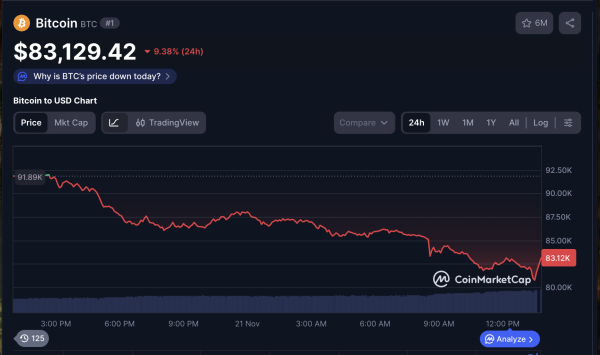Regulate to Lead: How India can lead the global Web3 race?
Synopsis
As global powers establish clear digital asset regulations, India must act decisively. With strong Web3 talent and startup growth, the country stands to lead in blockchain innovation. However, a lack of structured regulation could risk talent and capital outflow. Adopting global best practices is key to India’s Web3 leadership.
Over the last two years, the regulatory landscape surrounding virtual digital assets (VDAs) has undergone a rapid transformation. What once began as a fragmented policy debate has now matured into a coordinated, international effort to integrate digital assets into formal financial systems.
From Washington D.C. to Brussels, and Singapore to Dubai, the question is no longer if these assets should be regulated, but how to do so effectively and responsibly. For India—an emerging digital powerhouse with deep-rooted capabilities in technology and innovation—this global shift presents both a challenge and an opportunity. We must not remain passive observers. Instead, India must engage with global standards, develop a forward-looking domestic framework, and demonstrate leadership in this new frontier of the internet economy.
A global turning point in policy
Globally, regulatory clarity has emerged as the linchpin for trust, innovation, and mainstream adoption of digital assets. Key jurisdictions are transitioning from regulatory uncertainty to structured, principles-based approaches.
Crypto Tracker![]() TOP COIN SETSDeFi Tracker2.70% BuyCrypto Blue Chip – 50.09% BuyWeb3 Tracker-0.03% BuyNFT & Metaverse Tracker-2.26% BuyAI Tracker-6.27% BuyTOP COINS (₹) Ethereum337,898 (1.31%)BuyBitcoin10,364,429 (0.46%)BuyXRP275 (0.24%)BuyBNB70,121 (0.04%)BuySolana15,816 (-0.04%)Buy
TOP COIN SETSDeFi Tracker2.70% BuyCrypto Blue Chip – 50.09% BuyWeb3 Tracker-0.03% BuyNFT & Metaverse Tracker-2.26% BuyAI Tracker-6.27% BuyTOP COINS (₹) Ethereum337,898 (1.31%)BuyBitcoin10,364,429 (0.46%)BuyXRP275 (0.24%)BuyBNB70,121 (0.04%)BuySolana15,816 (-0.04%)Buy
In the United States—home to the largest crypto market—up to 40% of the population reportedly holds exposure to digital assets. Bipartisan momentum is building, with legislative developments such as the GENIUS Act and the Digital Asset Market Clarity Act indicating a shift toward comprehensive oversight, particularly in areas like stablecoins, investor protection, and systemic risk.
Did you Know?
The world of cryptocurrencies is very dynamic. Prices can go up or down in a matter of seconds. Thus, having reliable answers to such questions is crucial for investors.
View Details »
Live Events
Europe has taken a landmark step with the implementation of the Markets in Crypto-Assets (MiCA) framework, the world’s first pan-European regulatory regime for VDAs. MiCA establishes clear, harmonized rules across EU member states, signaling a commitment to regulatory certainty that facilitates institutional participation and market confidence.
Asia and the Middle East are also setting the pace. Hong Kong, Singapore, Japan, and South Korea are building nuanced regulatory frameworks that balance innovation with robust safeguards. In the UAE, entities like the Virtual Assets Regulatory Authority (VARA) in Dubai and the Financial Services Regulatory Authority (FSRA) in Abu Dhabi are fostering innovation through structured licensing and sandbox environments.
These developments offer a critical insight: regulation, when progressive and well-structured, is not an impediment but a catalyst for sustainable growth, investor trust, and global legitimacy.
India’s opportunity
India has made meaningful progress on the regulatory front, particularly in areas such as taxation and anti-money laundering (AML) enforcement. Yet, a significant gap remains: the absence of a publicly articulated, principles-based regulatory framework for VDAs. This gap introduces ambiguity for investors, innovators, and institutions, and risks pushing capital and talent to more accommodating jurisdictions.
However, India is uniquely positioned to lead the global Web3 transformation:
- India is rapidly emerging as the world’s largest hub for Web3 developers. As of 2024, Indian developers accounted for 17% of all new Web3 contributors on GitHub—4.7 million in total. The majority are under 27 and focused on high-impact verticals such as gaming, NFTs, DeFi, and real-world assets (RWAs).
- India ranks third globally in terms of Web3 startup founders, with over 1,200 active startups. In 2024 alone, Web3 funding in India grew by over 109% year-on-year, crossing $564 million. Emerging hotspots like Bengaluru continue to attract global capital and talent, with leading investments in AI-integrated blockchain applications, staking infrastructure, and tokenized real-world assets.
To retain its competitive edge and realize its full potential, India must adopt a regulatory approach that ensures:
- Regulatory Certainty for businesses and investors, aligned with global best practices
- Fair and Predictable Taxation that encourages participation rather than penalizes innovation
- Investor Protection Mechanisms that foster trust without stifling growth
- Open Dialogue with Industry Stakeholders to co-create practical policy frameworks
The stakes are high. Without decisive action, India risks a brain drain of its Web3 talent and capital to more progressive jurisdictions. We must move from policy hesitation to regulatory vision. The global momentum is undeniable—India now has the opportunity to seize it.
(The author, Dilip Chenoy is Chairperson at Bharat Web3 Association)
(Disclaimer: Recommendations, suggestions, views and opinions given by the experts are their own. These do not represent the views of The Economic Times)


